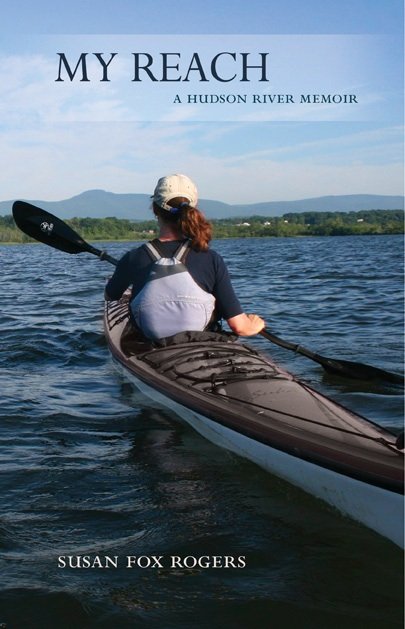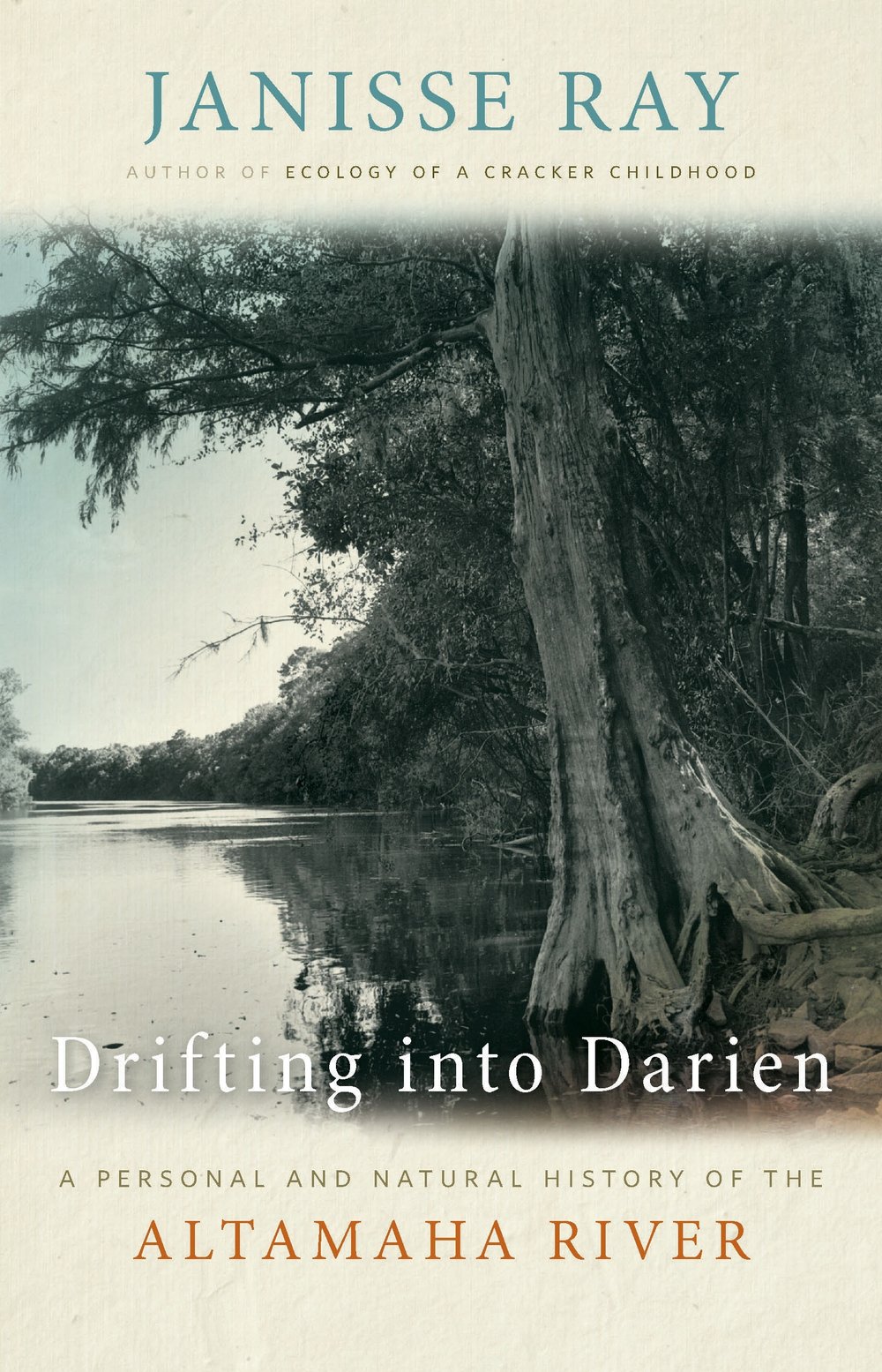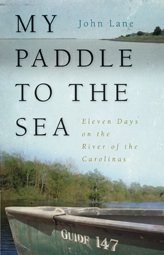 Mid-way through the fall I learned that mine was not the only book to be published this season about paddling down a river. Four other books carried writers into print this fall, from the Charles River in Massachusetts, to the rivers of the Carolinas, to the Altamaha in Georgia. I love these sorts of convergence. Certainly there are many paddle down river books but why five in one season? What has drawn us all to float and think—about rivers, about the environment, about life. Because if one thing unites these books is thinking about the world—paddling, whether in a canoe or a kayak, invites reflection. What is intriguing are the ways these books overlap, observations echo (those great blue heron; those sturgeon), words repeat ("drifting" "My") and number of pages to tell the story align (221 it is!). In some ways, this could be because a river is a river (though this isn’t exactly true) and paddling is paddling (again not true) but it seems we all turned to rivers for ideas, solace, inspiration, love. Rivers formed this country, and if I can conclude one thing it is that being in and on a river shapes how we see the world, relate to the world. I want to say they made us better people, though that sounds really cheesy. What I mean by better is more aware of our own thoughts, biases and desires, more attentive to the world, more appreciative of life. I’ll stop there before I write something foolish like: paddling is good for the world, not just for the soul.
Mid-way through the fall I learned that mine was not the only book to be published this season about paddling down a river. Four other books carried writers into print this fall, from the Charles River in Massachusetts, to the rivers of the Carolinas, to the Altamaha in Georgia. I love these sorts of convergence. Certainly there are many paddle down river books but why five in one season? What has drawn us all to float and think—about rivers, about the environment, about life. Because if one thing unites these books is thinking about the world—paddling, whether in a canoe or a kayak, invites reflection. What is intriguing are the ways these books overlap, observations echo (those great blue heron; those sturgeon), words repeat ("drifting" "My") and number of pages to tell the story align (221 it is!). In some ways, this could be because a river is a river (though this isn’t exactly true) and paddling is paddling (again not true) but it seems we all turned to rivers for ideas, solace, inspiration, love. Rivers formed this country, and if I can conclude one thing it is that being in and on a river shapes how we see the world, relate to the world. I want to say they made us better people, though that sounds really cheesy. What I mean by better is more aware of our own thoughts, biases and desires, more attentive to the world, more appreciative of life. I’ll stop there before I write something foolish like: paddling is good for the world, not just for the soul.
Over this break, I’ve read the books of my four river companions. Here are some observations.
 Janisse Ray claims the Altamaha river in her work Drifting Into Darien: A Personal and Natural History of the Altamaha River and she has every right to this little-known river: she grew up alongside the river, it’s in her blood and she lives there now. The first section of the book is a wonderful narrative of an 11-day kayak down the river with a group of friends and her husband—they have recently married, so there’s a twinge of honeymoon there as they escape the “real world.” There are delicious descriptions of birds, and the best description of paddling at night (one of my favorite things to do): “A river at night is magic. The feeling is of weightlessness, of floating not just horizontally but also vertically. Humans own the daylight, animals own night. A night paddle is about breaking biorhythms. It’s about becoming animal.” Yes. The second half of the book includes essays about the river: forming the Altamaha Riverkeeper, for instance. There’s a chapter on fresh water mussels and one on the absence of bears; there are sturgeon and fishing trips and politics. And, there’s grief, loss that informs some of these essays but mostly love—for the river, for the creatures, for life.
Janisse Ray claims the Altamaha river in her work Drifting Into Darien: A Personal and Natural History of the Altamaha River and she has every right to this little-known river: she grew up alongside the river, it’s in her blood and she lives there now. The first section of the book is a wonderful narrative of an 11-day kayak down the river with a group of friends and her husband—they have recently married, so there’s a twinge of honeymoon there as they escape the “real world.” There are delicious descriptions of birds, and the best description of paddling at night (one of my favorite things to do): “A river at night is magic. The feeling is of weightlessness, of floating not just horizontally but also vertically. Humans own the daylight, animals own night. A night paddle is about breaking biorhythms. It’s about becoming animal.” Yes. The second half of the book includes essays about the river: forming the Altamaha Riverkeeper, for instance. There’s a chapter on fresh water mussels and one on the absence of bears; there are sturgeon and fishing trips and politics. And, there’s grief, loss that informs some of these essays but mostly love—for the river, for the creatures, for life.
Mike Freeman paddled the length of the Hudson in a canoe and wrote about it in his narrative, Drifting: Two Weeks on the Hudson. He started as near to the headwaters in the Adirondacks as he could (the river emerges at Lake Tear of the Clouds near the summit of Mt. Marcy) and made his way south portaging, running rapids and once flipping over (a wonderfully dramatic moment). Amidst tales of eating more power bars than anyone should consume are lots of ideas on the environment, economy (Freeman was hit hard by the recent recession), politics, and religion (one of my favorite lines: “If there’s one thing I’ve always admired about churches, they were places people went to feel absolutely horrible about themselves.” ) The river, then, is a vehicle for ideas. Unlike me (and several of the other writers here), Freeman isn’t trying to claim the river as his in any way; he is just visiting (recently moved east from Alaska) for two weeks, to see what he could see and let his ideas wander with the river. Freeman is not an easy-going drifter—he’s on a fast course down the river, and his rants against everyone from polluters to coffee drinkers have the same sort of urgency.
 John Lane, a prolific southern writer, took to the stream in his backyard in South Carolina and canoed to the sea via the Broad, Congaree and Santee Rivers. His tale: My Paddle to the Sea: Eleven Days on the River of the Carolinas is framed by a river accident in Costa Rica in which one of the guides and one paddler drown. There are two choices in the face of such a heart-breaking event: never paddle again, or paddle into your sadness and fear. Lane chose the latter. His narrative, then, is rich in thoughtfulness with depth. At the heart of it are two friendships, first with the larger-than-life character with whom he paddles the first eight days of his journey, Venable Vermont (by name alone he takes wonderful space in the book) and the his neighbor Steve Patton. Through the trip Lane confronts more rain than any person should have to weather. Though there’s a tension at the end—will he and Steve Patton make it to the ocean—there’s a wonderful easy-going feel to this story, and Lane is a great companion, a wilderness lover, “More John Muir than Teddy Roosevelt.” (Venable is a good antidote to Lane’s dreaming). There’s a lot of terrific, southern history, literary history, river’s history in this book. I came away smarter for it.
John Lane, a prolific southern writer, took to the stream in his backyard in South Carolina and canoed to the sea via the Broad, Congaree and Santee Rivers. His tale: My Paddle to the Sea: Eleven Days on the River of the Carolinas is framed by a river accident in Costa Rica in which one of the guides and one paddler drown. There are two choices in the face of such a heart-breaking event: never paddle again, or paddle into your sadness and fear. Lane chose the latter. His narrative, then, is rich in thoughtfulness with depth. At the heart of it are two friendships, first with the larger-than-life character with whom he paddles the first eight days of his journey, Venable Vermont (by name alone he takes wonderful space in the book) and the his neighbor Steve Patton. Through the trip Lane confronts more rain than any person should have to weather. Though there’s a tension at the end—will he and Steve Patton make it to the ocean—there’s a wonderful easy-going feel to this story, and Lane is a great companion, a wilderness lover, “More John Muir than Teddy Roosevelt.” (Venable is a good antidote to Lane’s dreaming). There’s a lot of terrific, southern history, literary history, river’s history in this book. I came away smarter for it.
I would say that all of these books have an environmental agenda, but the most explicit is in David Gessner’s My Green Manifesto: Down the Charles River in Pursuit of a New Environmentalism. It has the outrage of a manifesto—outrage, interestingly enough, against environmentalists (in particular he slays two: Shellenberger and Nordhaus, who wrote “The Death of Environmentalism”) whom he sees as nagging and who repeat “global warming” too frequently. Which means that Gessner has a sense of humor, a rare quality in environmental writing. What I appreciated most is that birds are his “soft spot.” And it is through birds, through watching birds (though not being a birder!) that we really observe, and in observing we “migrate outward.” This looking outward is the first “step toward falling in love.” And it is when we love something, someone, a bird or a place that we want to protect it. So Gessner’s manifesto is really a return to caring for what we know, for where we live. This gives new life to the NIMBY environmentalist (which is what I am and have continued to preach for in these days of global warming). The journey down the Charles is conversational, even casual and is filled with beer and jokes and nearly breaking the canoe in half—in this sense it will appeal to a young audience. And that is exactly who Gessner wants to get with his book; he wants to light a fire under those young butts. So it is a manifesto indeed.